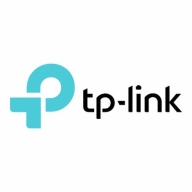

Cisco Wireless and Omada Access Points compete in the enterprise wireless networking category. Cisco Wireless holds the upper hand due to its advanced features, stability, and support for enterprise scenarios, whereas Omada prioritizes affordability and ease of use, appealing to budget-conscious organizations.
Features: Cisco Wireless offers security enhancements, seamless roaming, and robust management tools, focusing on high stability and scalability. It integrates well with other Cisco products and supports advanced security. Omada Access Points highlight ease of deployment, cost-effectiveness, and compatibility with essential management tools, proving reliable for smaller organizations.
Room for Improvement: Cisco Wireless users identify areas for improvement in pricing, ease of management, and cloud capabilities, criticizing its complex configurations and integration with non-Cisco products. Omada Access Points require enhancements in handling high user volumes, connection speed, and security, with users seeking better management tools and mesh features.
Ease of Deployment and Customer Service: Cisco Wireless mostly targets on-premises deployments with some cloud offerings, requiring professional expertise despite being straightforward. Its customer service is regarded as strong but occasionally inconsistent. Omada Access Points simplify deployment, earning praise for ease of use, and provide reliable customer service, though with a more limited support network.
Pricing and ROI: Cisco Wireless incurs higher costs, attributed to its advanced features and stability, presented through complex licensing models. It affords significant ROI over time through enhanced connectivity and management. Omada Access Points offer a more affordable one-time purchase model, advantageous for smaller budgets, delivering substantial value and reliability without ongoing licensing fees.
| Product | Market Share (%) |
|---|---|
| Cisco Wireless | 11.0% |
| Omada Access Points | 4.1% |
| Other | 84.9% |


| Company Size | Count |
|---|---|
| Small Business | 74 |
| Midsize Enterprise | 42 |
| Large Enterprise | 74 |
| Company Size | Count |
|---|---|
| Small Business | 10 |
| Midsize Enterprise | 2 |
| Large Enterprise | 4 |
Cisco Wireless is a comprehensive suite of wireless solutions designed to deliver secure, high-performance connectivity for enterprises of all sizes. Offering a range of access points, controllers, and advanced management tools, Cisco Wireless ensures seamless and reliable network access, enhancing mobility and productivity.
Cisco Wireless solutions provide robust, scalable wireless networks capable of supporting high-density environments and diverse applications. With features such as seamless roaming, advanced security protocols, and detailed analytics, Cisco Wireless addresses the needs of modern businesses. The solutions include the Cisco Catalyst and Aironet series access points, wireless LAN controllers, and the Cisco DNA Center for centralized management and automation.
What are the key features of Cisco Wireless?
What benefits should users look for in reviews when evaluating Cisco Wireless?
Cisco Wireless solutions are implemented across various industries, including healthcare, education, retail, and manufacturing. In healthcare, they support critical applications like patient monitoring and electronic health records. Educational institutions use Cisco Wireless to provide reliable internet access for students and staff. Retailers benefit from enhanced customer experiences through in-store connectivity, while manufacturers use wireless networks to improve operational efficiency and automation.
Pricing and licensing for Cisco Wireless solutions are typically based on the scale of deployment and specific product selections. Cisco offers various support plans, including 24/7 customer service, technical support, and access to software updates and patches.
In summary, Cisco Wireless provides robust, scalable wireless networking solutions that enhance connectivity, security, and management for diverse enterprise environments.
Omada access points provide a business-class wireless network solution that’s flexible, manageable, secure, and easy-to-deploy. The free EAP Controller software allows users to manage hundreds of EAPs at multiple sites, all from a single location. The ability to control, adjust and visualize the entire network from any connected PC makes centralized business Wi-Fi management more efficient than ever before. Omada EAPs also feature captive portal and advanced RF management functions, which make them ideal for demanding, high-traffic environments such as campuses, hotels, malls and offices.
We monitor all Wireless LAN reviews to prevent fraudulent reviews and keep review quality high. We do not post reviews by company employees or direct competitors. We validate each review for authenticity via cross-reference with LinkedIn, and personal follow-up with the reviewer when necessary.